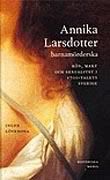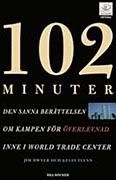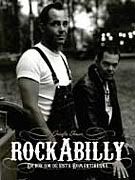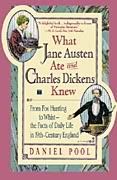|
an archive of my forays into fact and fiction
|
|
Speed reviews: part I
— Love @ 08:43 Comments (1)
Filed under: A-Z Reading Challenge, B, Book Blowout, C, Classics, D, English, GLBT interest, Historical, History, Lifestyle, Mystery, Religion, Romance, Science Fiction, Sex, sexuality & gender, Speed reviews, Swedish, To Be Read, Young Adult
Since I’m sick* and way behind on reviews, I’ve realised the only way to catch up is to make them speed reviews and post a whole batch at once.
The Age of Napoleon; Alistair Horne, eng, 235 
Interesting, but a little choppily written, and also the author assumes you know certain things and never explains them, while others he explains over and over again.
C
Cold Comfort Farm; Stella Gibbons, eng, 253 
Funny, though I accidentally didn’t read the preface, so I wasn’t 100 % how much of it was intentional (all of it, as it turns out, and as I suspected). Flora Poste is kind of annoying, but all right all the same.
For the TBR reading challenge and as part of the BBC Big Read.
B
Rebecca; Daphne du Maurier, eng, 410 
A re-read, not as good as I remembered it, but still lovely. Maxim is both wonderful and creepy.
C
Med uppenbar känsla för stil; Stephan Mendel-Enk, swe, 128 
Interestingly written about men and what’s considered masculine. References Morrissey at some points, mostly in connection with a man who went berserk and killed people. Lovely… not!
C
Unspeakable Love: Gay and Lesbian Life in the Middle East; Brian Whitaker, swe, 230 
Interesting, scary and occasionally a little bit hopeful.
C
Ingen behöver veta; Christina Wahldén, swe, 139 
About male rape and how it does exist, but people find it hard to believe. Kind of a non-ending, but then I suppose that’s sadly the case in most instances of actual male rape also.
C
Ingen grekisk gud, precis; Katarian Kieri, swe, 217 
Kind of brilliant tale of a young girl who falls for a teacher. Kind of brilliant mostly because the main character is into Morrissey, but for other reasons also. I was a bit worried where it was going to end, but it’s kind of perfect, really.
B
Sandman: The Kindly Ones; Neil Gaiman et al., eng, 335 
I wouldn’t say Sandman is Gaiman at his best, but I do like the stories and so also in this volume. Not my favourite, though.
For the TBR reading challenge.
C
Doctor Who: The Nightmare of Black Island; Mike Tucker, eng, 255 
Scary monsters and kiddies with nightmares. I liked it, but not as much as other DW books.
C
Doctor Who: The Art of Destruction; Stephen Cole, eng, 256 
Farming in Africa, golden statues and creepy aliens. Good, but not great. Doctor’s always nice, though.
C
Doctor Who: The Price of Paradise; Colin Brake, eng, 255 
References Franz Ferdinand and other pop culture a time or two. Not the best of the DW books I’ve read—I don’t much care for Colin Brake’s style of writing it, though I can’t put my finger on the exact reason.
C
Tro, hopp och burnout; Johan Unenge, swe, 228 
YA story about a guy who’s really into cars and death metal, who ends up going on a confirmation camp. It’s a decent story, and I was happy to see it didn’t end up quite where I expected it would, but the writing style is very, very choppy and not at all my cup of tea.
For the A-Z reading challenge.
C
Vadå feminist; Lisa Gålmark, swe, 188 
Basic guide to feminism. I wasn’t too keen on the writing and didn’t like the book all that much. Mostly it made me a little annoyed with the author, though it did contain sections worth thinking about. It bothers me that there is no question mark in the title.
For the A-Z reading challenge.
D
Homofamiljer; Sara Stenholm & Cecilia Strömberg, swe, 312 
About rainbow families and different ways to get one. Interesting, especially the personal stories, but not fab.
C
*Just a cold, but a bad one. I hate colds. And I’ve run out of Kleenex, which means my nose is very, very sore from regular paper towels. Woe.
Annika Larsdotter: barnamörderska; Inger Lövkrona
— Love @ 13:40 Comments (0)
Filed under: Back to History, C, History, Swedish, To Be Read, True crime
 Annika Larsdotter: barnamörderska Annika Larsdotter: barnamörderska
by Inger Lövkrona

For the Back to History and To Be Read reading challenges.
Swedish
255 pages
Historiska Media
ISBN: 91-88930-64-5
First line: Boston — Min vän slänger tidningsartikeln pÃ¥ skrivbordet med en kort kommentar: “Ja, här har du en till.”
Back cover blurb:
Annika Larsdotter avrättades 1765, 18 år gammal. Hon hade då erkänt dråp på sitt nyfödda barn genom kvävning. Barnets far var Annikas svåger som hade tvingat henne till sexuellt umgänge, men sedan förnekade faderskapet.
Annika Larsdotter var en av tusentals unga svenska kvinnor som under 1600-, 1700- och 1800-talen anklagades för barnamord eller fosterfördrivning. Brottet ansÃ¥gs vara samtidens största samhällsfara. Barnamörderskor dömdes strängt och utan förbarmande — kvinnan beskrevs ofta som en osedlig, ondskefull och grym moder, i nära släktskap med häxor.
Denna bok handlar om Annika men också om några av hennes olyckssystrar. Varför valde dessa kvinnor att mörda sitt barn? Varför valde de inte istället att, i likhet med andra ogifta mödrar, ta på sig rollen som ogift mor?
Etnologen Inger Lövkrona söker svaren genom att studera rättsfall från perioden 1729-1776. De bevarade domstolsprotokollen ger unika möjligheter att komma nära barnamörderskornas handlingar, tänkbara överväganden och känslor.
Very short synopsis in English: This is the study of eight cases from 18th century Sweden where young, unwed women murdered, or were accused of having murdered, their newborn children. Why did they do it?
Thoughts: This was a very interesting read, but what struck me as most shocking was an excerpt at the very beginning of the book, about “prom moms”. It’s easy to read about a case from the 18th century, where shame and desperation led someone to commit almost unspeakable offenses, and think that at least we’ve moved on from that now. Not everywhere we haven’t. Young women still sometimes don’t see any other way out. It’s absolutely horrifying and sad — it was then and it is now.
The book was sometimes a bit tricky to follow, but that always happens to me when I haven’t read academic texts in a while. All things considered, a C grade is in order.
102 minuter: den sanna berättelsen om kampen för överlevnad inne i World Trade Center; Jim Dwyer & Kevin Flynn
— Love @ 20:38 Comments (0)
Filed under: B, History, Swedish
 102 minuter: den sanna berättelsen om kampen för överlevnad inne i World Trade Center 102 minuter: den sanna berättelsen om kampen för överlevnad inne i World Trade Center
by Jim Dwyer and Kevin Flynn
Original title: 102 Minutes: The Untold Story of the Fight to Survive inside the Twin Towers

Swedish
427 pages
Bra Böcker
ISBN: 91-7002-370-0
First line: Under 102 minuter på morgonen den 11 september 2001 slogs 14 000 människor för livet i World Trade Center.
Back cover blurb:
At 8.46 am on September 11, 2001, 14,000 people were inside the Twin Towers in New York — reading emails, making calls, eating croissants… over the next 102 minutes each would become part of a drama for the ages, one truly witnessed only by the people who lived through it — until now. Of the millions of words written about that unforgettable day, most have been from outsiders. New York Times reporters Jim Dwyer and Kevin Flynn have taken the more revealing approach — reporting solely from the perspective of those inside the towers, 102 Minutes is the epic count of ordinary men and women, and includes incredible stories of bravery, courage, and overcoming unbelievable odds including the construction manager and his colleagues who pried open the doors and saved dozens of people in the north tower; the police officer who was a few blocks away, filing his retirement papers, but grabbed his badge and sprinted to the buildings; the window washer stuck in a lift fifty floors up who used a squeegee to escape; and the secretaries who led an elderly man down eighty-nine flights of stairs.
Chance encounters, moments of grace, a shout across an office shaped these minutes, marking the border between fear and solace, staking the boundary between life and death. Crossing a bridge of voices to go inside the infernos seeing cataclysm and herosim one person at a time, Dwyer and Flynn tell the affecting, authoritative saga of the men and women — the 12,000 who escaped and the 2,749 who perished — as they made 102 minutes count as never before.
(This text refers to an edition other than the one I read.)
Thoughts: This was one of the books I got in the book sale this year and this morning, when I woke up at five am with terrible cramps, it was one of four books I brought into my bedroom to try to keep my mind off the cramps, before the ibuprofen and paracetamol had time to work their magic. The plan was to read a chapter in each book and then decide which one to continue in. What happened was I picked up 102 Minutes, read a chapter, then read another chapter, until I found it was nearly seven o’clock and I was about a hundred pages in. I went back to sleep again then, and when I woke up again later, I picked the book right up and finished it.
It’s a good book, though a horrifying read, and cried for parts of it. It was hard not to, reading what those people went through, and given the fact that if things had been different — organised differently, built differently, communicated differently — it might not have been a disaster on such a massive scale.
A B rating, though as always I find it hard to rate non-fiction.
Rockabilly: en bok om de sista romantikerna; Josefin Ekman
— Love @ 17:26 Comments (1)
Filed under: B, Fashion, History, Lifestyle, Music, Swedish
 Rockabilly: en bok om de sista romantikerna Rockabilly: en bok om de sista romantikerna
by Josefin Ekman
Title translated to English: Rockabilly: a book about the last romantics

Swedish
263 pages
Atlas förlag
ISBN: 978-91-7389-303-9
First line: I juli 1959 reste den amerikanske vicepresidenten Richard Nixon till Moskva för att öppna American National Exhibition, en utställning om de tekniska och materiella framsteg som USA gjort.
Back cover blurb: n/a
Very short synopsis in English: This book is a report on the state of rockabilly today, mainly concentrating on Sweden, but briefly dealing with the US as well. A book about those whose passion in life is rockabilly—the music, the cars, the style.
Thoughts: I’ve had a fascination with the rockabilly style for a couple of years now, so when I saw this book I knew I had to read it sooner or later. It was an interesting work of non-fiction and I learnt a thing or two—apparently, true rockabilly fans absolutely abhor psychobilly (personally, I really like psychobilly), and (this was news to me) rockabilly is more alive and kicking in Sweden than almost anywhere else. I had no idea! (In other words: if this is true, why do I almost never see anyone with a quiff?)
Ekman’s language is well suited for the work and was a big part of why I enjoyed this book as much as I did. A B rating seems perfectly in order. And now I’m off to take a bath and wash my hair. You see, unlike 50’s hairstyles, mine does not stand to go more than a day or two without a wash.
What Jane Austen Ate and Charles Dickens Knew; Daniel Pool
— Love @ 13:39 Comments (4)
Filed under: B, English, History, Literature
 What Jane Austen Ate and Charles Dickens Knew What Jane Austen Ate and Charles Dickens Knew
by Daniel Pool

English
416 pages
Touchstone
ISBN: 978-0-671-88236-5
First line: What were the assizes?
Back cover blurb:
For every frustrated reader of the great nineteenth-century English novels of Austen, Trollope, Dickens, or the Brontës, who has ever wondered whether a duke outranked an earl, when to yell “Tally-ho!” at a fox hunt, or how one landed in debtor’s prison, here is a “delightful reader’s companion that lights up the literary dark.” (The New York Times)
This fascinating, lively guide clarifies the sometimes bizarre maze of rules, regulations, and customs that governed everyday life in Victorian England. Author Daniel Pool provides countless intriguing details (did you know that the “plums” in Christmas plum pudding were actually raisins?) on the Church of England, sex, Parliament, dinner parties, country house visiting, and a host of other aspects of nineteenth-century English life—both “upstairs” and “downstairs.”
An illuminating glossary reveals the meaning and significance of terms ranging from “ague” to “wainscoting,” the specifics of the currency system, and countless other curiosities of the day.
Thoughts: I’ve read a lot of 19th century British fiction in my day (though there’s a lot more out there that I haven’t), and some things I’ve picked up on from context, but some (most?) I still had a woeful lack of understanding for. This book cleared up some of those, by virtue of being full of useful facts.
What’s more, though, is that it is also full of little interesting anecdotes related to these facts. My favourite, which made me giggle out loud, follows below.
The neutral ground of a great estate, after all, was one of the few mattress-filled places a woman could go in the days before “ladies” could visit restaurants and hotels. Assignations, therefore, were apparently not unknown, although negotiating one’s way around a large mansion at night in order to carry them out was sometimes eventful. Lord Charles Beresford in the 1880s flung himself gleefully into a darkened room one night and jumped into bed, with a shout of “Cock-a-doodle-do”—only to find, when the lamps were lit, that the bishop of Chester was on one side of him and the bishop’s wife on the other.
Also, as the back cover promises, it gives one (if one is at all interested) the definition of the word “wainscoting”, which has had, for the past five or so years, an uncanny ability to randomly pop up inside my head and refuse to leave me alone, so I’m stuck having to silently repeat the word time and time again inside my own head. (I might have inadvertently proclaimed myself to be mental right there, but I’m not much bothered.) For those of you who don’t know:
Wainscoting: Wainscot was a kind of fancy oak imported from Russia, Holland or Germany. The term “wainscoting” was applied to panels that were originally made out of such oak.
All in all, a very interesting book which, apart from earning a B rating, has made me really want to re-read Tess of the d’Urbervilles by Thomas Hardy, preferably two seconds ago. Alas, I don’t think I have the time for it at the moment, so I’m saving it for later on this month when I have a lot of time off from work (and also plan on reading Crime and Punishment).
|
|















 Annika Larsdotter: barnamörderska
Annika Larsdotter: barnamörderska
 102 minuter: den sanna berättelsen om kampen för överlevnad inne i World Trade Center
102 minuter: den sanna berättelsen om kampen för överlevnad inne i World Trade Center
 Rockabilly: en bok om de sista romantikerna
Rockabilly: en bok om de sista romantikerna What Jane Austen Ate and Charles Dickens Knew
What Jane Austen Ate and Charles Dickens Knew